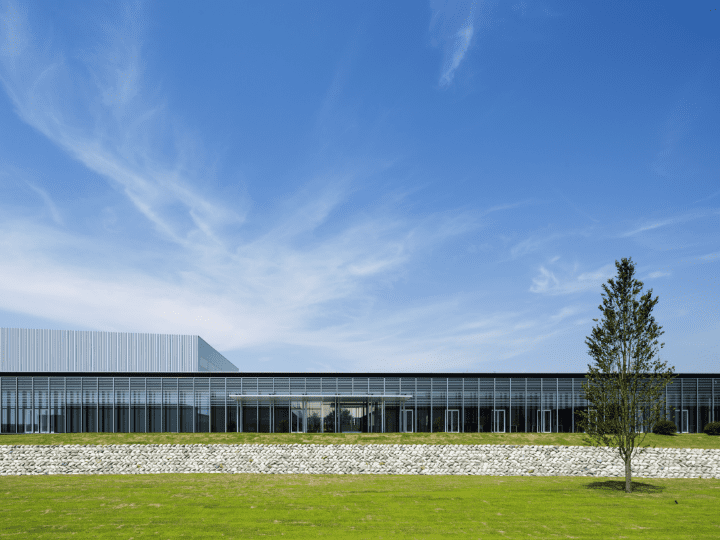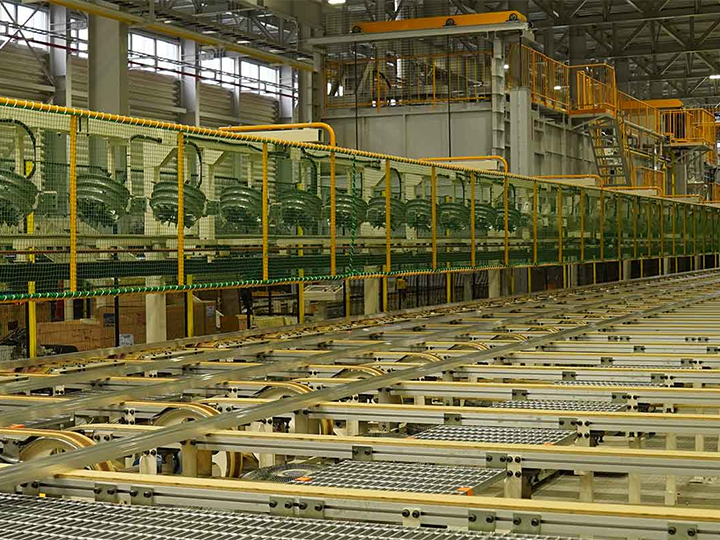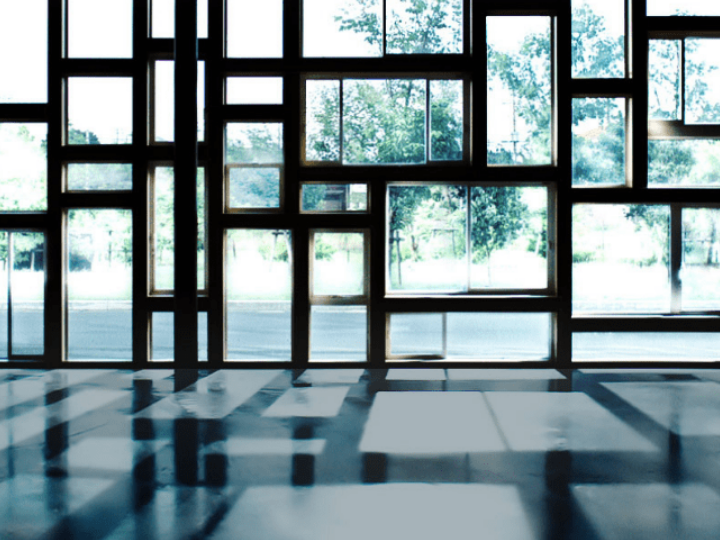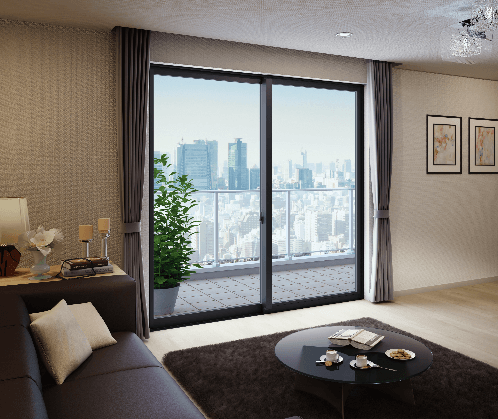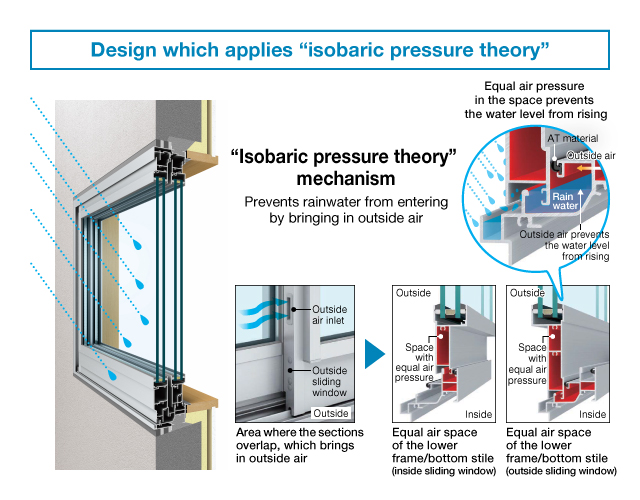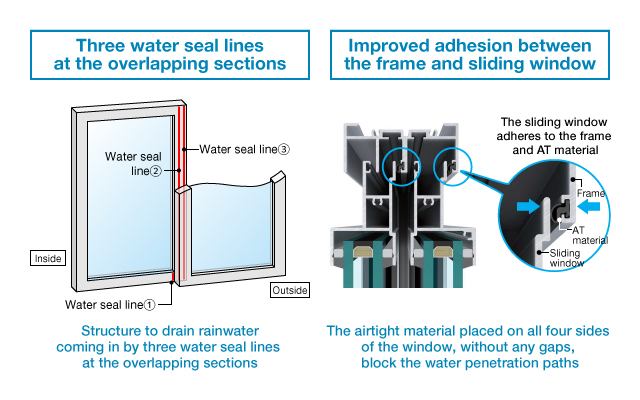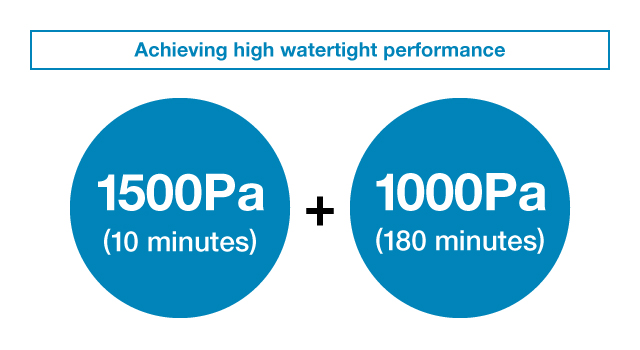- HOME
- Technologies
- Highlighted Technologies
- High watertight performance technology that protects people’s daily lives from heavy rain and typhoons
High watertight performance
technology that protects people’s daily lives from heavy rain and typhoons
Technologies
In recent years, natural phenomena such as large, powerful typhoons and prolonged heavy rain have become more intense, and this has increased the risk of leakage damage to buildings. High-rise buildings, in particular, can be exposed to more intense winds and rain than those on the ground, due to the strong winds that blow up above. This situation calls for windows to be designed and built for high watertight performance, which reliably prevents water from getting inside and provides safety and security.
YKK AP has developed high watertight performance for double-sliding windows, combining multiple technologies to achieve superior watertight performance. As a basic principle of window design, we focused on the characteristic that air moves from a place of high atmospheric pressure to a place of low atmospheric pressure. The window’s design applies the "isobaric pressure theory," which keeps the air pressure inside the window frame at the same level as the air pressure outside, to suppress the force of water attempting to flood the window. Specifically, air pathways called outside air inlet are placed where the frames overlap, as well as the lower part of the frame. The inside of the window frame is designed to have almost the same air pressure as the air pressure outside to prevent rainwater from entering and keep the water level in the lower frame from rising.
At the same time, we also thought about blocking window gaps to prevent water from getting inside. The three water seal lines at the overlapping sections and the airtight material placed on all four sides of the window, without any gaps, block the water penetration paths.
The design of these windows has achieved a high watertight performance of 1,500 Pa, greatly exceeding the highest grade of W-5 (500Pa) specified by Japanese Industrial Standards (JIS).
According to JIS, the standard for assessment is the windows preventing water from flowing out of the frame or blowing out for ten minutes. However, taking severe weather conditions—such as typhoons staying in the area for a long period of time—into account, we conducted a test which applied 1,000 Pa to the windows for 180 minutes.
As a result, we have confirmed that the windows also perform excellently at withstanding long periods of inclement weather, and do not interfere with daily life.
This high watertight performance technology has been introduced in products and properties deployed not only in Japan but also overseas, providing security and comfort to local communities through continuous improvement and evolution.

